For the 2025 school year, there is 1 public high school serving 837 students in Lincoln County Schools School District. This district's average high testing ranking is 4/10, which is in the bottom 50% of public high schools in West Virginia.
Public High School in Lincoln County School School District have an average math proficiency score of 17% (versus the West Virginia public high school average of 21%), and reading proficiency score of 42% (versus the 47% statewide average).
Public High School in Lincoln County School School District have a Graduation Rate of 89%, which is less than the West Virginia average of 91%.
The school with highest graduation rate is Lincoln County High School, with 89% graduation rate. Read more about public school graduation rate statistics in West Virginia or national school graduation rate statistics.
Minority enrollment is 1% of the student body (majority Black and Hispanic), which is less than the West Virginia public high school average of 12% (majority Black).
Overview
This School District
This State (WV)
# Schools
8 Schools
172 Schools
# Students
2,865 Students
80,929 Students
# Teachers
233 Teachers
5,875 Teachers
Student : Teacher Ratio
12:1
12:1
District Rank
Lincoln County Schools School District, which is ranked within the bottom 50% of all 57 school districts in West Virginia (based off of combined math and reading proficiency testing data) for the 2021-2022 school year.
The school district's graduation rate of 89% has decreased from 93% over five school years.
Overall District Rank
#50 out of 57 school districts
(Bottom 50%)
(Bottom 50%)
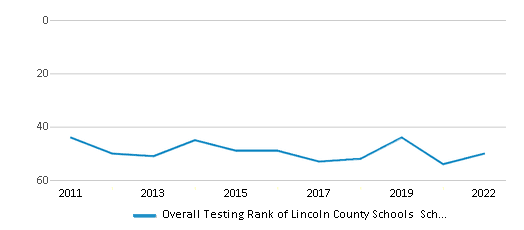
Math Test Scores (% Proficient)
24%
32%
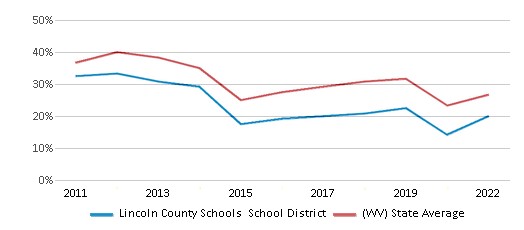
Reading/Language Arts Test Scores (% Proficient)
32%
41%
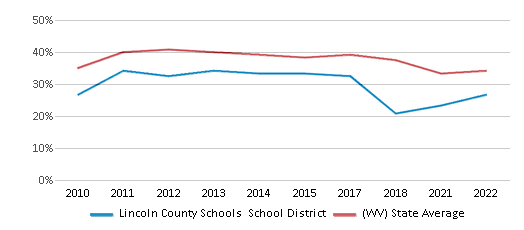
Science Test Scores (% Proficient)
18%
28%
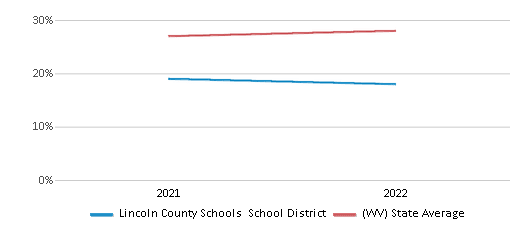
Graduation Rate
89%
91%
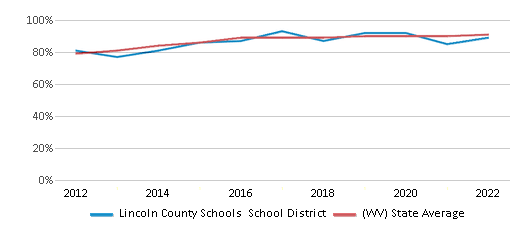
Students by Ethnicity:
Diversity Score
0.04
0.22
# American Indian Students
3 Students
93 Students
% American Indian Students
n/a
n/a
# Asian Students
3 Students
618 Students
% Asian Students
n/a
1%
# Hispanic Students
7 Students
2,064 Students
% Hispanic Students
n/a
3%
# Black Students
28 Students
3,524 Students
% Black Students
1%
4%
# White Students
2,808 Students
71,575 Students
% White Students
98%
88%
# Hawaiian Students
n/a
37 Students
% Hawaiian Students
n/a
n/a
# Two or more races Students
16 Students
3,018 Students
% of Two or more races Students
1%
4%
Students by Grade:
# Students in PK Grade:
180
221
# Students in K Grade:
214
182
# Students in 1st Grade:
217
218
# Students in 2nd Grade:
201
162
# Students in 3rd Grade:
171
153
# Students in 4th Grade:
204
176
# Students in 5th Grade:
211
266
# Students in 6th Grade:
185
839
# Students in 7th Grade:
223
1,634
# Students in 8th Grade:
222
1,682
# Students in 9th Grade:
301
20,756
# Students in 10th Grade:
221
19,734
# Students in 11th Grade:
161
18,284
# Students in 12th Grade:
154
16,622
# Ungraded Students:
-
-
District Revenue and Spending
The revenue/student of $16,173 is higher than the state median of $15,963. The school district revenue/student has grown by 8% over four school years.
The school district's spending/student of $15,196 is higher than the state median of $15,138. The school district spending/student has grown by 8% over four school years.
Total Revenue
$46 MM
$3,933 MM
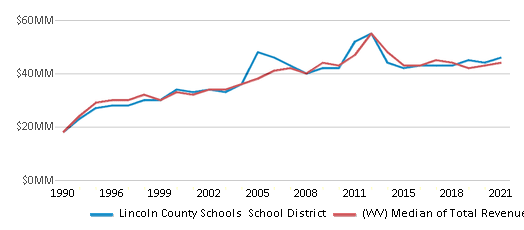
Spending
$44 MM
$3,730 MM
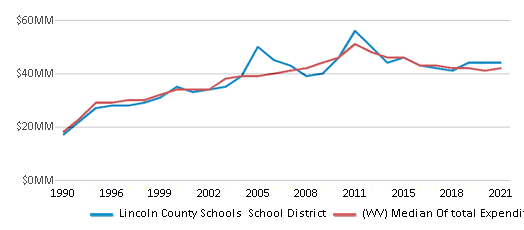
Revenue / Student
$16,173
$15,963
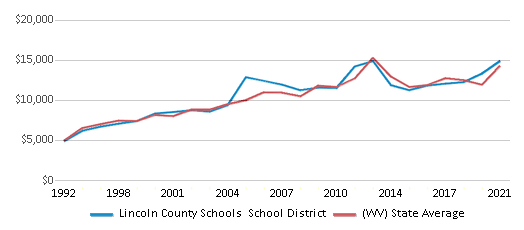
Spending / Student
$15,196
$15,138
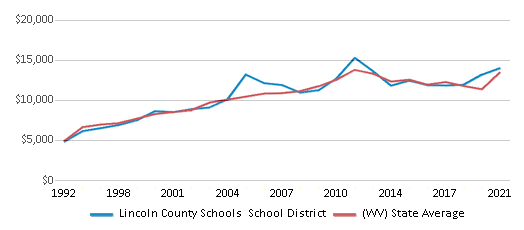
Best Lincoln County Schools School District Public High Schools (2025)
School
(Math and Reading Proficiency)
(Math and Reading Proficiency)
Location
Grades
Students
Rank: #11.
Lincoln County High School
(Math: 15-19% | Reading: 40-44%)
Rank:
Rank:
3/
Bottom 50%10
81 Panther Way
Hamlin, WV 25523
(304) 824-6000
Hamlin, WV 25523
(304) 824-6000
Grades: 9-12
| 837 students
Recent Articles

What Is A Charter School?
Explore the world of charter schools in this comprehensive guide. Learn about their history, how they operate, and the pros and cons of this educational innovation. Discover key facts about charter schools, including admission policies, demographics, and funding, as well as what to look for when considering a charter school for your child.

10 Reasons Why High School Sports Benefit Students
Discover the 10 compelling reasons why high school sports are beneficial for students. This comprehensive article explores how athletics enhance academic performance, foster personal growth, and develop crucial life skills. From improved fitness and time management to leadership development and community representation, learn why participating in high school sports can be a game-changer for students' overall success and well-being.

February 05, 2025
Understanding the U.S. Department of Education: Structure, Impact, and EvolutionWe explore how the Department of Education shapes American education, from its cabinet-level leadership to its impact on millions of students, written for general audiences seeking clarity on this vital institution.





